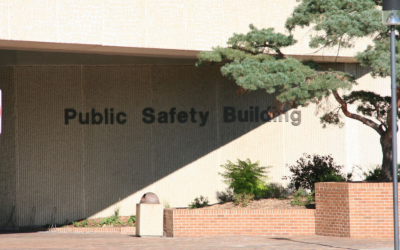Estimates of what it will cost to address the destruction wreaked by Hurricane Harvey are projected to be somewhere in the range of $160 billion, with Texas accounting for most of that total. Hard to believe that it would be possible to have enough damage to equal the combined total cost of Hurricane Katrina and Super Storm Sandy, but that is the likely result. Texas is now officially the new “hot spot” for government contracting of almost every imaginable type.
The Federal Emergency Management Agency (FEMA), the U.S. Coast Guard, the U.S. Department of Energy and the U.S. Department of Health and Human Services now have 5,000 officials in Texas, but the storm is still active and the flooding has not subsided. Once the crisis is calmer, cleanup and rebuilding will begin. It will continue for years.
The offices at Strategic Partnerships, Inc. (SPI) have been inundated with calls from contractors asking questions about cleanup and rebuilding efforts. Because of that, this column’s objective is to describe the guidelines. There is much to be done and Texas communities need all the help they can get right now.

Emergency directors in some of the most impacted parts of Texas include:
- City of Houston- Rick Flanagan
- Aransas County- Rick McLester
- Harris County – Judge Ed Emmett
The state and federal government both play major roles when there is a statewide disaster. Normally, state officials are first on the scene but federal officials arrive quickly.
FEMA’s Logistics Management Directorate stockpiles essential emergency goods called Initial Response Resources (IRR) long before disasters occur so they are able, along with other emergency organizations, to begin allocating resources quickly. FEMA’s resources are available almost immediately and this usually includes things like water, food, cots, tarps, blue roofing sheeting and blankets. While exact quantities fluctuate, the division typically keeps around 13.1 million items with a street value of about $96 million in supplies stockpiled.
Before disasters occur, FEMA also uses FedBizOpps to solicit items that will be required during an emergency. For services, FEMA turns to the General Services Administration (GSA) Army Corps of Engineers.
Sample items of commonly stockpiled include:
- Infant/toddler products;
- Durable medical equipment;
- Consumable medical supplies kits;
- Cargo vans;
- Generators;
- Joint Field Office kit;
- Leased copiers;
- Sign language services;
- Temporary labor; and
- Janitorial services.
The FEMA Public Assistance Grant Program moves into action after an event is declared a disaster. This program provides resources for the repair, replacement or restoration of public facilities that are eligible for funding assistance. Contractors with pre-arranged emergency contracts are eligible for funding/ reimbursement for work that is required.
Contractors with equipment, services and specific types of recovery assistance should contact this division of FEMA to inquire about getting vetted for pre-arranged contracts.
FEMA’s Procurement Disaster Assistance Team also moves into the area to offer recovery assistance. However, many additional contracts for rebuilding are procured through the state or municipality level of government.
Funding required after a disaster is almost always extremely high. For instance:
- FEMA granted more than $43.8 million for recovery assistance very soon after the Houston floods in 2016; and
- In 2012, $2 billion in recovery assistance grants was issued after Super Storm Sandy, with additional funding coming later.
Companies with capabilities to assist after a disaster should stay registered with FEMA. The agency’s Industry Liaison Program qualifies local firms to serve as prime or subcontractors in the event of a disaster. When there are too few local contractors, FEMA turns to the Army Corps of Engineers and the GSA for assistance.
Registering with FEMA is not all that difficult. Before a disaster, register with the System for Award Management (SAM) and submit a voluntary vendor profile form. While FEMA does not keep a preferred vendor list, registering and submitting a profile will expedite everything in emergency situations.
Here’s hoping this is helpful and that there are thousands of firms interested in helping with cleanup and rebuilding. Texas will want to recover and bounce back as quickly as possible.
Strategic Partnerships, Inc. (SPI) is leading the way in the rapidly expanding area of public-private partnerships. Learn about SPI’s service offerings in both the public and private sectors by contacting them today.






